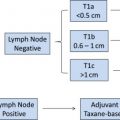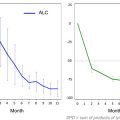Breast cancer is the most common cancer in women worldwide. The selective estrogen-receptor (ER) modulators tamoxifen and raloxifene are approved by the Food and Drug Administration for the preventive therapy of breast cancer. Other drugs have shown promise but need further assessment. In the present review, we present an update of the chemoprevention of ER-positive breast cancer and discuss the potential role of metformin and aspirin, 2 drugs other than the specific “antihormones.”
Key points
- •
Tamoxifen and raloxifene have been shown in randomized clinical trials to reduce the risk of developing primary invasive breast cancer in high-risk women.
- •
The aromatase inhibitor exemestane is a viable option but further follow-up is needed, as well as on other aromatase inhibitors in the prevention setting.
- •
Metformin and aspirin also show promise. However, preventive therapy needs to be integrated into wider strategies of risk reduction, weight control, and increase in physical activity.
Introduction
Excluding cancers of the skin, breast cancer remains the most frequently diagnosed cancer in women. Although the incidence rate began to decline in 2000 because of reductions in the use of menopausal hormone therapy, an estimated 226,870 new cases of invasive breast cancer were expected to occur among women in the United States in 2012. The idea of preventing breast cancer dates back at least a century, when the first positive associations between environmental or individual factors and increased risk of breast cancer development were asserted. Although the precise mechanisms that promote a breast cancer are not completely established, the success of several recent clinical trials in preventive settings in selected high-risk populations suggests that chemoprevention is a rational and appealing strategy. The term “chemoprevention” was coined by Michael B. Sporn in a 1976 article to define “the use of pharmacologic or natural agents that inhibit the development of invasive breast cancer either by blocking the DNA damage that initiates carcinogenesis, or by arresting or reversing the progression of premalignant cells in which such damage has already occurred.” Progress has been made since then, and now 2 medications are currently approved by the Food and Drug Administration (FDA) to reduce the risk of primary breast cancer. In this review, we present an update of the chemoprevention of estrogen receptor (ER)-positive breast cancer and discuss the potential role of metformin and aspirin, 2 drugs other than the specific “antihormones.”
Introduction
Excluding cancers of the skin, breast cancer remains the most frequently diagnosed cancer in women. Although the incidence rate began to decline in 2000 because of reductions in the use of menopausal hormone therapy, an estimated 226,870 new cases of invasive breast cancer were expected to occur among women in the United States in 2012. The idea of preventing breast cancer dates back at least a century, when the first positive associations between environmental or individual factors and increased risk of breast cancer development were asserted. Although the precise mechanisms that promote a breast cancer are not completely established, the success of several recent clinical trials in preventive settings in selected high-risk populations suggests that chemoprevention is a rational and appealing strategy. The term “chemoprevention” was coined by Michael B. Sporn in a 1976 article to define “the use of pharmacologic or natural agents that inhibit the development of invasive breast cancer either by blocking the DNA damage that initiates carcinogenesis, or by arresting or reversing the progression of premalignant cells in which such damage has already occurred.” Progress has been made since then, and now 2 medications are currently approved by the Food and Drug Administration (FDA) to reduce the risk of primary breast cancer. In this review, we present an update of the chemoprevention of estrogen receptor (ER)-positive breast cancer and discuss the potential role of metformin and aspirin, 2 drugs other than the specific “antihormones.”
Selective ER modulators: randomized clinical trials and meta-analysis
Selective ER modulators (SERMs) are synthetic ER ligands. They are characterized by different chemical structures, which may influence their specific activities, but they all work by binding to the ER and preventing the cell division stimulus induced by estrogen. Nine randomized clinical trials have analyzed the effect of a SERM in preventing breast cancer ( Table 1 ).
| No. of Patients | Population | Median Duration of Follow-up, mo | RR | Comment | |
|---|---|---|---|---|---|
| Tamoxifen | |||||
| IBIS-I | 7139 | High risk | 96 | 0.66 (0.50–0.87) | |
| Italian Study | 5408 | Normal risk; hysterectomy | 132 | 0.77 (0.51–1.16) | |
| Royal Marsden Trial | 2471 | High risk | 158 | 0.61 (0.43–0.86) | |
| NSABP | |||||
| Raloxifene | |||||
| MORE | 7705 | Osteoporosis; postmenopausal | 48 | 0.28 (0.17–0.46) | 3 arms: 60 mg, 20 mg, placebo in 1:1:1 ratio; BC as secondary end point |
| CORE | 4011 | Osteoporosis; postmenopausal | 96 | 0.24 (0.22–0.40) | BC as secondary end point |
| RUTH | 10,101 | Postmenopausal and CHD | 67 | 0.45 (0.28–0.72) | |
| STAR | 19,747 | High risk and postmenopausal | 81 | 1.24 (1.05–1.47) vs tamoxifen | Estimated RR 0.77 vs placebo |
| Lasofoxifene | |||||
| PEARL | 8556 | Osteoporosis; age 59–80 y | 60 | 0.19 (0.07–0.56) | Two doses of lasofoxifene (0.25 and 0.5 mg) or placebo for 5 y in a 1:1:1 ratio; RR reduction only for 0.5-mg daily group |
| Arzoxifene | |||||
| Generations | 9354 | Osteoporosis; age ≥ years | 48 | 0.30 (0.14–0.63) | |
| Anastrozole | |||||
| IBIS-II | Total of 6844 women enrolled (3864 to Prevention and 2980 to DCIS) | High risk and postmenopausal | // | // | IBIS-II Prevention (anastrozole 1 mg vs placebo); IBIS-II DCIS (anastrozole 1 mg vs tamoxifen 20 mg) |
| Exemestane | |||||
| MAP.3 | 4560 | High risk and postmenopausal | 35 | 0.35 (0.18–0.70) | |
| Metformin | |||||
| Chlebowski et al, 2012 | 68,019, 3401 with diabetes at study entry, 3273 invasive breast cancers diagnosed | Postmenopausal women participating in Women’s Health Initiative clinical trials | 11.8 | 0.75 (0.57–0.99) | |
| MA 32 | Planned 3582, randomized to 850 mg (or placebo) twice daily for 5 y | Patients with early-stage and resected breast cancer | Ongoing | N.A. | |
| Aspirin | |||||
| Holmes et al, 2010 | 4164 | Nurses’ Health Study, stage I, II, III breast cancer | Maximum 30 | // | Breast cancer mortality 0.51 (0.41–0.65) |
| Li et al, 2012 | 1024 | Cases from a population-based case-control study followed as a cohort | 7.3 | // | Breast cancer mortality 0.89 (0.52–1.52) |
Tamoxifen
The International Breast Cancer Intervention Study (IBIS-I) is a double-blind placebo-controlled randomized trial of tamoxifen, 20 mg per day for 5 years, in 7152 women, aged 35 to 70 years, at increased risk of breast cancer. The primary outcome measure was the frequency of invasive and in situ breast cancer. After a median follow-up of 96 months, 142 breast cancers were diagnosed in the 3579 women in the tamoxifen group and 195 in the 3575 women in the placebo group (4.97 vs 6.82 per 1000 woman-years, respectively; risk ratio [RR] 0.73, 95% confidence interval [CI] 0.58–0.91, P = .004). The prophylactic effect of tamoxifen was constant for the entire follow-up period, and no diminution of benefit was observed for up to 10 years after randomization. On the contrary, side effects in the tamoxifen group were much lower after completion of the active treatment period than during active treatment. Deep vein thrombosis and pulmonary embolism were statistically significantly higher in the tamoxifen arm than in the placebo arm during active treatment (52 vs 23 cases, RR 2.26, 95% CI 1.36–3.87) but not after tamoxifen was stopped (16 vs 14 cases, RR 1.14, 95% CI 0.52–2.53). The 2 arms did not differ in the risk of ER-negative invasive tumors (35 in each arm, RR 1.00, 95% CI 0.61–1.65) across the entire follow-up period, but the risk of ER-positive invasive breast cancer was 34% lower in the tamoxifen arm (87 vs 132 cases, RR 0.66, 95% CI 0.50–0.87). In conclusion, the risk-reducing effect of tamoxifen appears to persist for at least 10 years, but most side effects of tamoxifen do not continue after the 5-year treatment period.
The Italian Tamoxifen Prevention Study included 5408 healthy hysterectomized women aged 35 to 70 years who were randomized to 20 mg per day of tamoxifen or placebo for 5 years. After 11 years of follow-up, 136 women (74 placebo, 62 tamoxifen) developed breast cancer (RR 0.84, 95% CI 0.60–1.17; annual rates were 2.48 and 2.07 per 1000 women-years, respectively). The rates of breast cancer in the 2 groups were similar among women who had had bilateral oophorectomy and among women at low risk for ER-positive disease but were much lower in the tamoxifen group among women at high risk (placebo, 6.26 per 1000 women-years, tamoxifen, 1.50 per 1000 women-years; RR 0.24, 95% CI 0.10–0.59). During the treatment period, women in the tamoxifen group reported more hot flashes (RR 1.78, 95% CI 1.57–2.00), vaginal discharge (RR 3.44, 95% CI 2.90–4.09), and urinary disturbances (RR 1.52, 95% CI 1.23–1.89), but fewer headaches (RR 0.68, 95% CI 0.50–0.94), than women in the placebo group. Hypertriglyceridemia (RR 4.33, 95% CI 1.96–9.53), thromboembolic events (RR 1.63, 95% CI 1.02–2.62), and cardiac arrhythmia or atrial fibrillation (RR 1.73, 95% CI 1.01–2.98) were also more frequent in the tamoxifen group than in the placebo group. Withdrawal rate was mainly because of menopausal symptoms and differed according to estrogen replacement therapy (ERT) use, with compliance being 78% and 75% at 3 and 5 years, respectively, for women who never took ERT, and 92% and 88% at 3 and 5 years, respectively, for women not on ERT at baseline, but who took ERT at some time during the trial.
The Royal Marsden Hospital tamoxifen randomized chemoprevention trial accrued 2494 healthy women between 30 and 70 years with a family history of breast cancer. They were randomized to receive tamoxifen 20 mg per day orally or placebo for up to 8 years. The 20-year follow-up (median follow-up = 13 years) analysis reported 186 invasive breast cancers (82 on tamoxifen and 104 on placebo; hazard ratio [HR] 0.78, 95% CI 0.58–1.04; P = .1). Of these 186 cancers, 139 were ER positive (53 on tamoxifen and 86 on placebo; HR 0.61, 95% CI 0.43–0.86; P = .005). The risk of ER-positive breast cancer was not statistically significantly lower in the tamoxifen arm than in the placebo arm during the 8-year treatment period (30 cancers in the tamoxifen arm and 39 in the placebo arm; HR 0.77, 95% CI 0.48–1.23; P = .3) but was statistically significantly lower in the posttreatment period (23 in the tamoxifen arm and 47 in the placebo arm; HR 0.48, 95% CI 0.29–0.79; P = .004). Fifty-four participants in each arm have died from any cause (HR 0.99, 95% CI 0.68–1.44; P = .95). The clinically significant adverse events, including other cancers, thromboembolisms, and non–breast cancer deaths were low, occurred predominantly during the treatment period, and were similar to those reported in the interim analysis.
In the National Surgical Adjuvant Breast and Bowel Project P-1 study, women (n = 13,388) at increased risk for breast cancer (60 years of age or older; 35–59 years of age with a 5-year predicted risk for breast cancer of at least 1.66% [chances in 100 of invasive breast cancer developing within 5 years]; women with a history of lobular carcinoma in situ) were randomly assigned to receive placebo (n = 6707) or 20 mg per day tamoxifen (n = 6681) for 5 years. Tamoxifen reduced the risk of invasive breast cancer by 49% (2-sided P <.00001), with cumulative incidence through 69 months of follow-up of 43.4 versus 22.0 per 1000 women in the placebo and tamoxifen groups, respectively. The decreased risk occurred in women aged 49 years or younger (44%), 50 to 59 years (51%), and 60 years or older (55%); risk was also reduced in women with a history of lobular carcinoma in situ (56%) or atypical hyperplasia (86%) and in those with any category of predicted 5-year risk. Tamoxifen reduced the risk of noninvasive breast cancer by 50% (2-sided P <.002) and the occurrence of ER-positive tumors by 69%, but no difference in the occurrence of ER-negative tumors was seen. After 7 years of follow-up, the effects were similar to those seen in the initial report. The cumulative rate of invasive breast cancer was reduced from 42.5 per 1000 women in the placebo group to 24.8 per 1000 women in the tamoxifen group (RR 0.57, 95% CI 0.46–0.70) and the cumulative rate of noninvasive breast cancer was reduced from 15.8 per 1000 women in the placebo group to 10.2 per 1000 women in the tamoxifen group (RR 0.63, 95% CI 0.45–0.89). Tamoxifen administration did not alter the average annual rate of ischemic heart disease; however, a reduction in hip, radius, and spine fractures was observed. The rate of endometrial cancer was increased in the tamoxifen group (RR 2.53, 95% CI 1.35–4.97) and this increased risk occurred predominantly in women aged 50 years or older. All endometrial cancers in the tamoxifen group were stage I (localized disease) and no endometrial cancer deaths have occurred in this group. No increase in other tumors was observed in the tamoxifen group. The rates of stroke, pulmonary embolism, and deep vein thrombosis were elevated in the tamoxifen group; these events occurred more frequently in women aged 50 years or older. Tamoxifen led to a 32% reduction in osteoporotic fractures (RR 0.68, 95% CI 0.51–0.92). Relative risks of stroke, deep vein thrombosis, and cataracts (which increased with tamoxifen) and of ischemic heart disease and death (which were not changed with tamoxifen) were also similar to those initially reported. Risks of pulmonary embolism were approximately 11% lower than in the original report, and risks of endometrial cancer were about 29% higher, but these differences were not statistically significant. The net benefit achieved with tamoxifen varied according to age, race, and level of breast cancer risk.
In 2003, Cuzick and colleagues performed a meta-analysis including the 4 previously mentioned clinical trials and showed that ER-positive cancers were decreased by 48% (36–58; P <.0001) by tamoxifen treatment. Rates of endometrial cancer and venous thromboembolic events were increased in all tamoxifen prevention trials (consensus relative risk 2.4 [1.5–4.0]; P = .0005, and 1.9 [1.4–2.6] ; P <.0001, respectively). Overall, there was no effect on non–breast cancer mortality; the only cause showing a mortality increase was pulmonary embolism (6 vs 2).
Raloxifene
Two trials investigated the role of raloxifene in postmenopausal women with osteoporosis. The Multiple Outcomes of Raloxifene Evaluation (MORE) trial randomized 7705 women to either placebo or raloxifene at 60 mg or 120 mg daily for 4 years in a 1:1:1 ratio. Women were a mean of 66.5 years old at trial entry, 19 years postmenopause, and osteoporotic (low bone mineral density and/or prevalent vertebral fractures). In the completed 4-year trial, raloxifene decreased the incidence of all breast cancers by 62% and invasive breast cancers by 72% compared with placebo (RR 0.28, 95%; CI 0.17–0.46). This reduction was largely attributable to the 84% reduction in invasive ER-positive breast cancers in the raloxifene group. Raloxifene had no effect on ER-negative breast cancers (RR 0.16, 95% CI 0.09–0.30). These data indicate that 93 osteoporotic women would need to be treated with raloxifene for 4 years to prevent 1 case of invasive breast cancer. Raloxifene was generally safe and well tolerated; however, thromboembolic disease occurred more frequently with raloxifene compared with placebo ( P = .003).
The Continuing Outcomes of Relevant to Evista (CORE) trial examined the effect of continuing raloxifene for additional 4 years on the incidence of invasive breast cancer in women in MORE who agreed to continue in CORE (n = 6511). The study compared only the 60-mg dose with placebo so that these women who were initially randomized to 120 mg daily had their dose reduced to 60 mg. During the CORE trial, the 4-year incidences of invasive breast cancer and ER-positive invasive breast cancer were reduced by 59% (HR 0.41, 95% CI 0.24–0.71) and 66% (HR 0.34, 95% CI 0.18–0.66), respectively, in the raloxifene group compared with the placebo group. There was no difference between the 2 groups in incidence of ER-negative invasive breast cancer. Over the 8 years of both trials, the incidences of invasive breast cancer and ER-positive invasive breast cancer were reduced by 66% (HR 0.34, 95% CI 0.22–0.50) and 76% (HR 0.24, 95% CI 0.15–0.40), respectively, in the raloxifene group compared with the placebo group. During the CORE trial, the relative risk of thromboembolism in the raloxifene group compared with that in the placebo group was 2.17 (95% CI 0.83–5.70). This increased risk, also observed in the MORE trial, persisted over the 8 years of both trials.
The Raloxifene Use for The Heart (RUTH) trial randomly assigned 10,101 postmenopausal women (mean age, 67.5 years) with established cardiovascular disease, coronary heart disease (CHD), or risk factor for heart disease to either 60 mg per day of raloxifene or matching placebo and followed them for a median of 5.6 years. The 2 primary outcomes were coronary events and invasive breast cancer. As compared with placebo, raloxifene did not significantly affect the risk of CHD but it reduced the risk of invasive breast cancer (40 vs 70 events; HR 0.56, 95% CI 0.38–0.83; absolute risk reduction, 1.2 invasive breast cancers per 1000 women treated for 1 year); the benefit was primarily attributable to a reduced risk of ER-positive invasive breast cancers. There was no significant difference in the rates of death from any cause or total stroke according to group assignment, but raloxifene was associated with an increased risk of fatal stroke (59 vs 39 events; HR 1.49, 95% CI 1.00–2.24; absolute risk increase, 0.7 per 1000 woman-years) and venous thromboembolism (103 vs 71 events; HR 1.44, 95% CI 1.06–1.95; absolute risk increase, 1.2 per 1000 woman-years).
The National Surgical Adjuvant Breast and Bowel Project Study of Tamoxifen and Raloxifene (STAR) compared raloxifene with tamoxifen among women at increased risk of developing breast cancer. The trial randomized a total of 19,747 postmenopausal women (mean age 58.5 years) to either tamoxifen 20 mg per day or raloxifene 60 mg per day for 5 years in a double dummy blind fashion. From 1999 to 2005, there were 163 cases of invasive breast cancer in women assigned to tamoxifen and 168 in those assigned to raloxifene (incidence, 4.30 per 1000 vs 4.41 per 1000; RR 1.02, 95% CI 0.82–1.28). There were fewer cases of noninvasive breast cancer in the tamoxifen group (57 cases) than in the raloxifene group (80 cases) (incidence, 1.51 vs 2.11 per 1000; RR 1.40, 95% CI 0.98–2.00). There were 36 cases of endometrial cancer with tamoxifen and 23 with raloxifene (RR 0.62, 95% CI 0.35–1.08). No differences were found for other invasive cancer sites, for ischemic heart disease events, or for stroke. Thromboembolic events occurred less often in the raloxifene group (RR 0.70, 95% CI 0.54–0.91). The number of osteoporotic fractures in the groups was similar. There were fewer cataracts (RR 0.79, 95% CI 0.68–0.92) and cataract surgeries (RR 0.82, 95% CI 0.68–0.99) in the women taking raloxifene. There was no difference in the total number of deaths (101 vs 96 for tamoxifen vs raloxifene) or in causes of death. An updated analysis with an 81-month median follow-up showed that the RR of raloxifene:tamoxifen for invasive breast cancer was 1.24 (95% CI 1.05–1.47) and for noninvasive disease, 1.22 (95% CI 0.95–1.59). Compared with initial results, the RRs increased for invasive and decreased in width for noninvasive breast cancer. Toxicity RRs were 0.55 (95% CI 0.36–0.83; P = .003) for endometrial cancer (this difference was not significant in the initial results), 0.19 (95% CI 0.12–0.29) for uterine hyperplasia, and 0.75 (95% CI 0.60–0.93) for thromboembolic events. There were no significant mortality differences. In conclusion, long-term raloxifene retained 76% of the effectiveness of tamoxifen in preventing invasive disease and grew closer over time to tamoxifen in preventing noninvasive disease, with significantly less endometrial cancer.
Lasofoxifene
The Postmenopausal Evaluation and Risk-Reduction with Lasofoxifene (PEARL) trial recruited 8556 postmenopausal healthy women aged 59 to 80 years with low bone density and normal mammograms. Subjects were randomly assigned to 2 doses of lasofoxifene (0.25 and 0.50 mg) or placebo for 5 years in a 1:1:1 ratio. The primary end points were incidence of ER-positive breast cancer and nonvertebral fractures at 5 years. Lasofoxifene at a dosage of 0.5 mg per day, as compared with placebo, was associated with reduced risks of ER-positive breast cancer (0.3 vs 1.7 cases per 1000 person-years; HR 0.19, 95% CI 0.07–0.56). A nested case-control study of 49 case patients with incident breast cancer and 156 unaffected control subjects from the PEARL trial was performed to evaluate treatment effects on risk of total and ER-positive invasive breast cancer by baseline serum estradiol and sex hormone–binding globulin levels. Compared with placebo, 0.5 mg of lasofoxifene statistically significantly reduced the risk of total breast cancer by 79% (HR 0.21, 95% CI 0.08–0.55) and ER-positive invasive breast cancer by 83% (HR 0.17, 95% CI 0.05–0.57). The effects of 0.5 mg of lasofoxifene on total breast cancer were similar regardless of Gail score, whereas the effects were markedly stronger for women with baseline estradiol levels greater than the median (odds ratio [OR] 0.11, 95% CI 0.02–0.51) versus those with levels less than the median (OR 0.78, 95% CI 0.16 to 3.79; P for interaction = .04). Both the lower and higher doses, as compared with placebo, were associated with an increase in venous thromboembolic events (3.8 and 2.9 cases vs 1.4 cases per 1000 person-years; HR 2.67, 95% CI 1.55–4.58, and HR 2.06, 95% CI 1.17–3.60, respectively). Endometrial cancer occurred in 3 women in the placebo group, 2 women in the lower-dose lasofoxifene group, and 2 women in the higher-dose lasofoxifene group.
Arzoxifene
The Generations trial, a multicenter, placebo-controlled, double-blind trial, compared arzoxifene 20 mg per day and placebo in 9354 postmenopausal women with osteoporosis (n = 5252) or low bone mass (n = 4102). Primary outcomes were vertebral fracture in the osteoporotic population and invasive breast cancer in all study participants. The detailed breast cancer findings from the trial were reported recently by Powles and colleagues. After 48 months of follow-up there were a total of 75 breast cancers, 53 in the placebo group and 22 in the arzoxifene group (HR 0.41, 95% CI 0.25–0.68, P <.001), with a 59% reduction in overall breast cancer incidence with arzoxifene compared with placebo. Although generally well tolerated, there was a significant increase in venous thromboembolism, vasomotor symptoms, muscle cramps, and some gynecologic events with arzoxifene.
Stay updated, free articles. Join our Telegram channel

Full access? Get Clinical Tree







